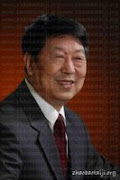Gravity and atmospheric pressure.
For the last 5 years , i was not sensing any improvements. I tried refining my strokes, my footwork,my structure. I realized that after 15 years of repetitive refinement, the room for improvement on the physical aspects is too narrow to burrow into. So what should i be looking into from here. I started to look into the non-physical aspects : Sensations! The pursuit of relaxation, the pursuit of "松"
My late Grand-master"s final words : To find the new level of relaxation within relaxation relentlessly." So again , i am back to basics.
After 5 years of effort , i finally realized what " Harmonizing with nature " meant. Both Gravity and atmospheric pressure have always existed since the day we were born,everything on earth is subjected to it but how often do we sense it and capitalize on its existence? For the last 5 years ,i have been constantly reducing my tension in my whole body , over time , i begin to realize that the more i relax, the deeper my weight sinks, and the less i will resist atmospheric pressure. As for the part of resisting atmospheric pressure, its pretty much the same feeling of sinking to the bottom of the swimming pool and feeling the water pressure.
Slowly i begin to understand that at this level of sensitivity, i am able to neutralize much bigger force and expel with greater force as well. My body soon became a medium between the 2 forces(gravity and atmospheric pressure) . Sensing the existence of both forces have conditioned my body not to defy any of the 2 forces.
As i mentioned , this is something that is not tangible nor quantifiable. It is a journey of sensation, nothing can guide you towards it except practice and practice and practice........
I hope this article can be passed on to the future generations of taichi enthusiasts .
Enjoy!!!
`
.

